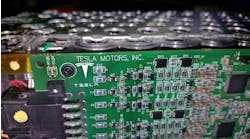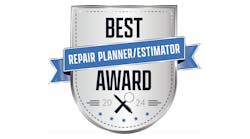Benjamin Franklin said that “by failing to prepare, you are preparing to fail.”
That’s certainly true of the pre-repair process, isn’t it? When a car comes into your shop, it’s the amount and quality of preparation you undertake that determines how the entire job will go—whether the process will be smooth, efficient, and profitable or disorganized, delayed, and ultimately, unproductive.
Timothy Morgan, chief operating officer and managing director of Spanesi Americas, along with Jeramy Holloway, Spanesi’s director of technical training, explain how to develop a pre-repair process standard that will prepare you to succeed.
As told to Lindsey Gainer
Remove Variability
A highly effective pre-repair process is simple. Our aim is always to deliver quality products to our customers on time. To do this we create a full pre-repair plan, detailing exactly what will take place as the vehicle moves through the repair process. We call this ‘removing the variability’ in the repair. We are completely aware of all parts, labor, and materials needed, as well as any required tooling and equipment. We also know what the repair will cost. When the work is handed off post-repair plan, there is a crystal-clear understanding of what people and what processes are needed to get that vehicle back on the road with a high-quality repair that meets or exceeds OEM requirements.
We also have a predictable workflow—we know how big the job is and how long it will take to complete. From a business standpoint, a predictable workflow reduces the chance of having too much or too little work in the production system. A production system that is full and moving means we are fixing more cars, getting more cars back on the road, and pleasing more customers.
Create a Process Standard
To achieve a full, accurate repair plan there must be a process standard, or a road map of steps, to get the vehicle to the condition it needs to be in before it moves through the production system. Once we have verified that all the steps have been completed properly, we have met the target condition.
When people work to standards it’s easier to improve the process, because we can easily see where there’s room to do things better. Process standards are something that should be part of every step of the repair, but even more importantly part of developing the pre-repair plan.
The plan to reach the target condition might look something like this:
- Identify the damage.
- Remove parts that need to be removed—100% disassembly.
- Locate, read, and post OEM procedures.
- Make repair vs. replace decisions per OEM/material type/attempt to repair standards.
- Check and verify colors by variant.
- Identify and order all replacement parts (including their ETA).
- Organize the parts cart so new parts can be matched and loaded, and the vehicle can be reassembled with little to no communication from the pre-planning department.
- Identify special tooling or consumables as on-hand, in stock, or ordered.
- Add all parts, labor, and materials to the bill.
- Ensure complete understanding of the workflow from the pre-planning department.
Involve Your Employees…and Customers
The steps to build the standard that serves as your roadmap to achieve target condition really depend on the facility, workers, and types of cars being repaired. The best way to build standards is to involve the people that are doing the work. This really helps with buy-in and promotes engagement from the team. Nobody knows that work better than the people that are the subject matter experts. The engaged expert will be quick to suggest improvements when something isn't working.
Compared to 10-20 years ago, customers now want to be more informed, too. A call to the customer to review the repair plan together goes a long way. If we know that the customer can see the progress, it’s extra motivation to get the repair plan right and nail every step along the way.
Aim to Constantly Improve
We all know that pre-repair planning means taking the car apart to find all the damage, organizing the parts cart, researching OEM procedures, etc. But we can’t forget the most important step of all—constant improvement. Constant improvement is what makes for an efficient repair facility.
When we are working to standards, we are always poking holes in our own process and looking for ways to improve. This is why a collision repair facility is often referred to as an experiment. From sunup to sundown, the best shops are constantly running the problem-solving experiment by looking for ways to increase quality, increase speed, and reduce costs.




